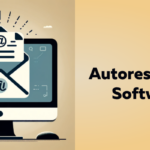In the world of digital marketing, where consumers are exposed to an overwhelming amount of information and choices, businesses must explore innovative strategies to capture and retain their target audience. Facebook retargeting campaigns have emerged as a formidable tool, offering businesses a golden opportunity to reconnect with potential customers who have shown initial interest but left without making a purchase. This essay will explore the concept of Facebook retargeting, its benefits, and the various techniques that can be employed to maximize its potential for conversion.
What is Facebook Retargeting?
Facebook retargeting is a marketing technique that allows businesses to serve ads to individuals who have previously interacted with their website or social media content but did not convert. By utilizing the data collected through the Facebook Pixel, a piece of code placed on websites, businesses can create custom audiences and strategically position ads to increase the likelihood of conversion. This personalized approach ensures businesses remain firmly in the minds of their potential customers, providing an invaluable second chance to make a sale.
Why Retargeting on Facebook?
The sheer scale and reach of Facebook make it an unparalleled platform for retargeting campaigns. With billions of active users logging into Facebook each month, businesses can access a vast pool of potential customers who have already shown interest in their products or services. Furthermore, Facebook’s comprehensive targeting options allow businesses to refine their audience based on demographics, interests, and behaviour, ensuring that their retargeting efforts are directed at the most relevant individuals.
How Does Facebook Retargeting Work?
Facebook retargeting operates through a three-step process. First, the Facebook Pixel is installed on the business’s website, enabling the tracking of user activity and collecting valuable data such as page views, online purchases, or cart abandonment. This data is then used to create custom audiences based on specific actions or behaviours. Finally, businesses craft tailored ads that are displayed to these customized audiences as they browse through their Facebook feed, ensuring that their message is delivered to individuals with a higher propensity for conversion.
Types of Retargeting:
- Site Retargeting: This is the most common type of Facebook retargeting, involving targeting users who have visited a specific website or specific pages within the website. The aim is to remind visitors about their interests and drive them back to complete the desired action.
- Dynamic Product Retargeting: This approach involves showing users ads related to products or services they have previously viewed or added to their carts. By displaying these personalized ads, businesses can remind potential customers of their initial interest and encourage them to make a purchase.
- Email Retargeting: By integrating email marketing campaigns with Facebook retargeting, businesses can retarget individuals who have opened or clicked on an email but not converted. This holistic approach helps reinforce the marketing message and increases the chances of a successful conversion.
Killing Steps to Retarget the Audience:
- Install the Facebook Pixel: The first step to effective Facebook retargeting is implementing the Facebook Pixel on the business’s website. This code snippet enables the tracking of user behaviour, creating a foundation for building custom audiences.
- Reach Your Audience with Ads: Craft visually compelling ads that resonate with your target audience and align with your marketing message. These ads should highlight the benefits of your products or services, address any concerns or objections, and provide clear calls to action to drive conversions.
- Throw Special Offers: Entice potential customers with exclusive discounts, limited-time promotions, or free shipping. By offering incentives, businesses can create a sense of urgency and motivate individuals to complete their purchases.
- Exclude the Already Converted Users: Avoid wasting resources by excluding individuals who have already converted from future retargeting campaigns. This ensures that your advertising budget is focused on reaching potential customers who have yet to convert.
- Measure the Ad Frequency: Finding the right balance between staying top of mind and appearing too pushy is crucial. Monitor the frequency of your ads to prevent ad fatigue and ensure your retargeting efforts remain effective over time.
Some Cool Facebook Retargeting Examples:
- Retarget the Blog Readers: Businesses can leverage Facebook retargeting to reach individuals who have shown interest in their blog content. By displaying ads linked to related products or services, businesses can engage potential customers and encourage them to take the next step.
- Retarget Past Purchasers: Repeat customers are a valuable asset, and Facebook retargeting can nurture their loyalty further. By offering upsells, cross-sells, or complementary products, businesses can leverage their existing customer base to drive repeat purchases.
- Retarget the Inactive Users: Identify individuals who have previously engaged with your brand but have become inactive. By retargeting them with new product offerings, exclusive content, or personalized recommendations, businesses can reignite their interest and boost engagement.
Conclusion:
Facebook retargeting campaigns offer businesses a powerful tool to reconnect with potential customers who have expressed interest but left without converting. By leveraging comprehensive audience targeting options and crafting captivating ads, businesses can increase their chances of converting retargeted users by up to 70%. Whether retargeting site visitors, past purchasers, or inactive users, Facebook retargeting provides an avenue of opportunity that businesses simply cannot afford to miss. Embrace the power of Facebook retargeting and unlock the goldmine of conversion potential it offers.
















